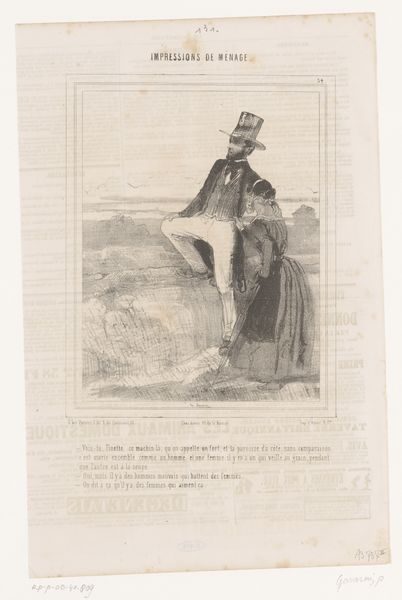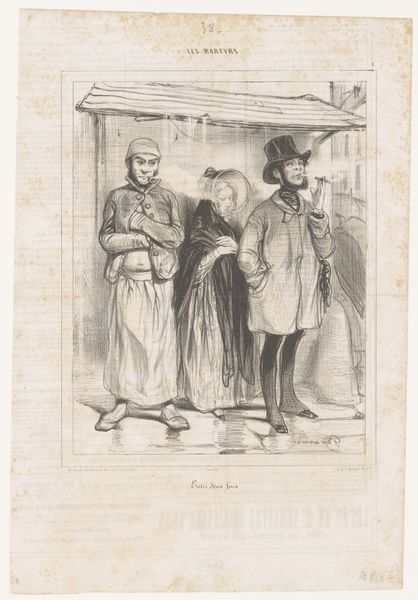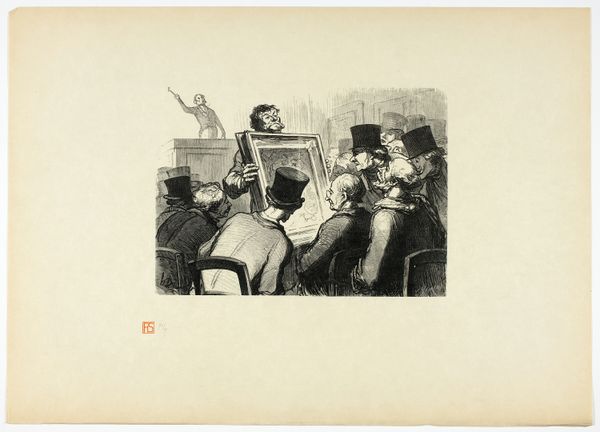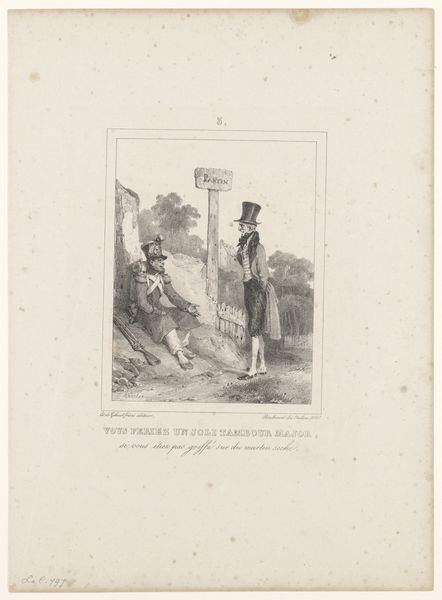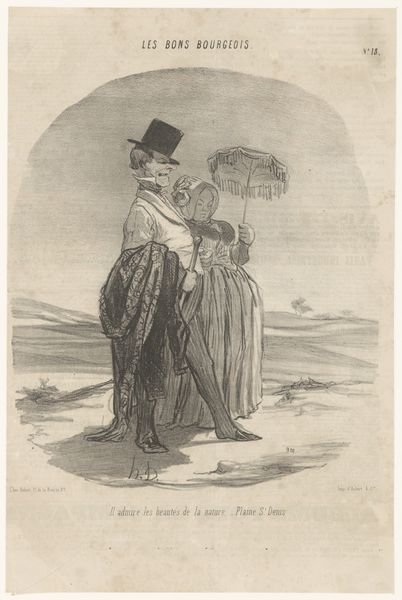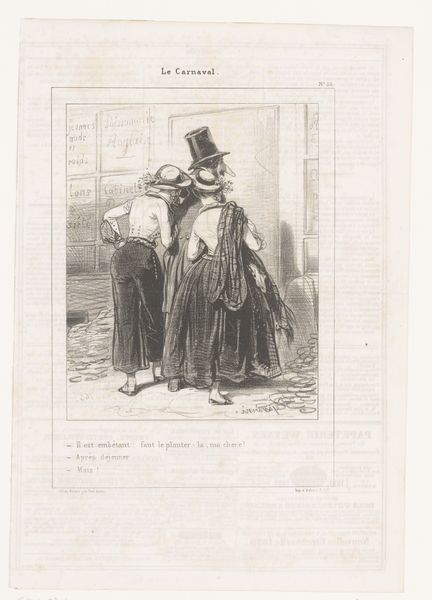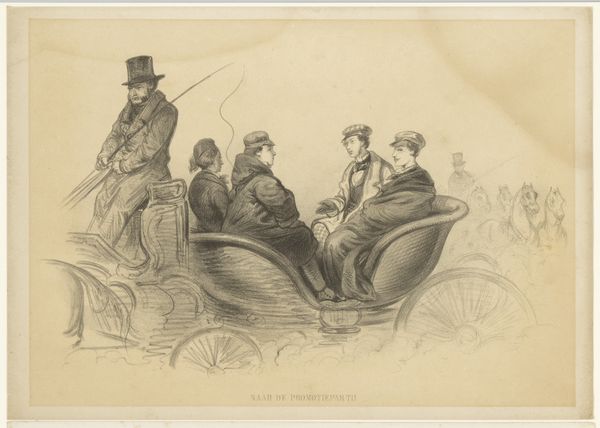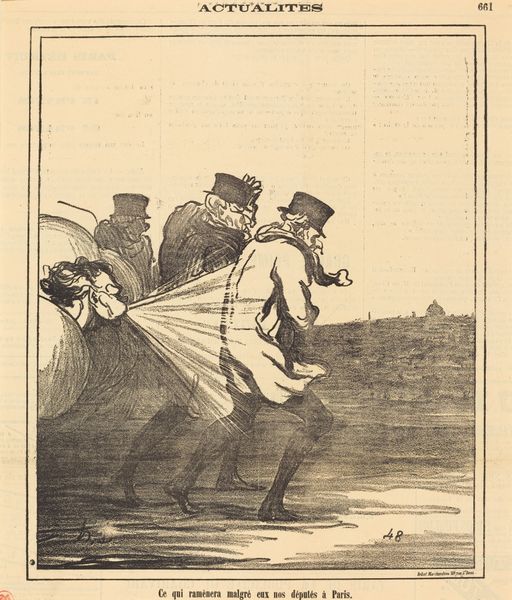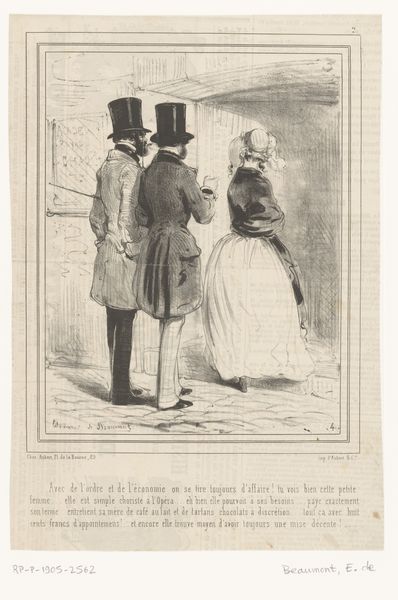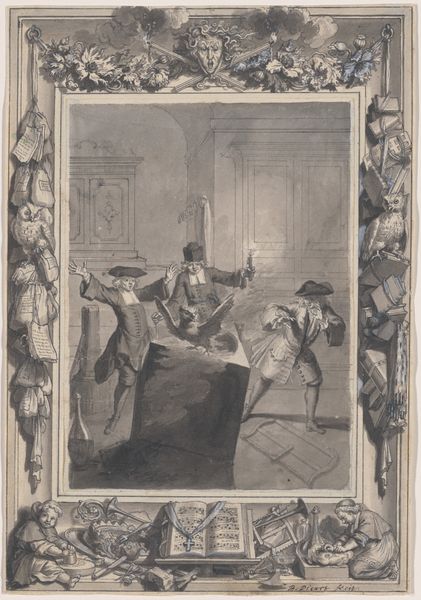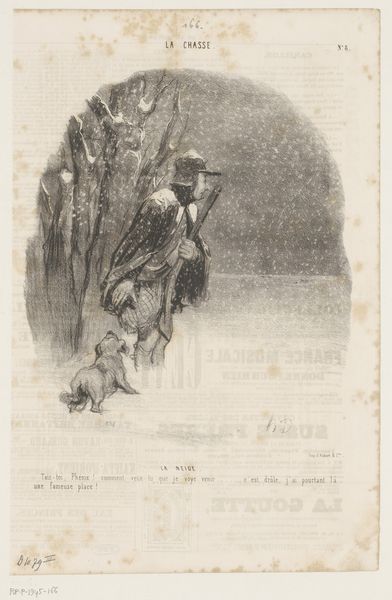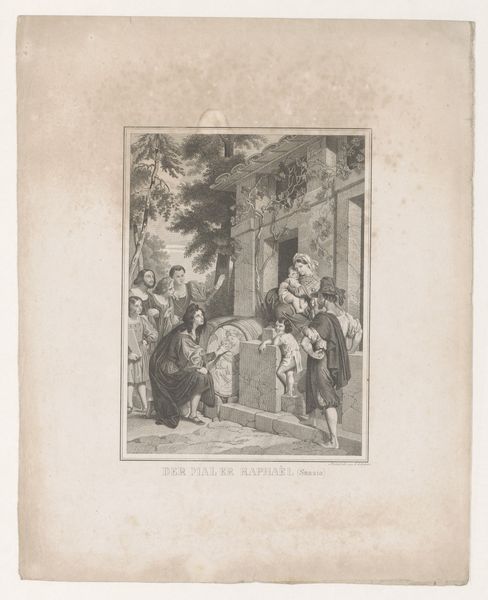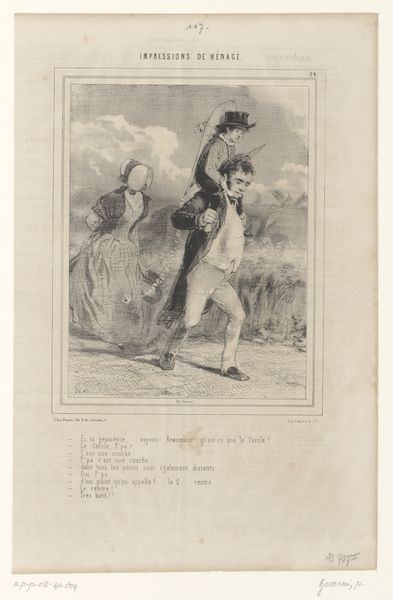
Dimensions: height 303 mm, width 224 mm
Copyright: Rijks Museum: Open Domain
Curator: Welcome. We're standing before Édouard de Beaumont’s "Dames en heren kijken naar de paardenraces," a lithograph from 1846 currently housed here at the Rijksmuseum. Editor: My initial impression is that this piece captures a fleeting moment. The energy of the crowd is almost palpable, a sea of indistinct forms punctuated by the clear, elegant lines of the figures in the foreground. It feels so immediate, so fresh. Curator: Indeed, Beaumont’s employment of lithography to document a leisure activity links directly into shifts within 19th-century French society, notably in Paris, which saw expanding urbanisation alongside class distinctions and the rise of the bourgeoisie who actively sought such entertainments as these horse races, to exhibit their class status and taste for fine items. Editor: Focusing on its formal elements, I’m drawn to the strategic use of light and shadow. Note how Beaumont emphasizes the women’s voluminous dresses. Observe how those forms direct the viewers eyes up and out to follow the racing horses—only merely alluded to by the blurred individuals in the background with little concern of any spatial depth between our audience and them. It creates a rhythm that's quite effective. Curator: Yes, and that’s crucial to understanding the function of the lithograph: part entertainment, part fashion report, part socio-cultural document! It circulated widely and participated actively within conversations around class, taste, leisure and consumerism defining Second Empire Paris. The horse race as subject, too, reflects power dynamics – this isn’t just sport but spectacle, imbued with imperial significance as symbol representing French prowess or decadence. Editor: Looking closely at the lithographic technique—the precise, controlled application of ink creates a textural variance from rough scumbles to refined sharp marks which adds complexity; this isn’t just informational image creation— it’s crafted intentionally both narratively and decoratively and thereby elevates the experience to much beyond casual documentation of merely recording of observation. The artist isn't just capturing an event, he's shaping a viewpoint on it, creating through formal considerations which reflect social implications on representation of power & observing elites present too. Curator: Precisely. Consider its intended audience - predominantly upper or middle-class Parisians like subjects inside view - seeing reflections about and aspirations towards self, culture and luxury... beyond races and more an active statement! So by engaging closely what art mirrors versus it reveals speaks more volumes too then originally conceived in mere viewing itself.. Editor: Well said. This piece offers a lot—not just capturing beauty—instead reveals how intimately technique connects with subject informing much better perception concerning how one visual represents both at once reflecting era with nuances both formal yet profoundly insightful which stimulates broader interpretations surrounding place, persons + their relationship with period reflected thru creative execution as final gesture demonstrating artwork truly transcends superficial levels, revealing deeper truths!
Comments
No comments
Be the first to comment and join the conversation on the ultimate creative platform.
